Practicing Recollection Throughout the Day
April 22, 2015 by Connie Rossini
St. John Chrysostom wrote, “It is impossible, utterly impossible, for the man who prays eagerly and invokes God ceaselessly ever to sin” (De Anna 4, 5). Since you are reading this post, I assume that you would like to be able to overcome every temptation. But how can we pray constantly, as not only Chrysostom, but also St. Paul taught (cf 1 Thessalonians 5:17)?
St. Teresa of Avila gives us a place to start. Speaking 
about praying vocal prayer well, she pauses a moment to urge her readers to pray throughout the day:
“We must retire within ourselves even during our ordinary occupations. If I can recall the companionship which I have within my soul for as much as a moment, that is of great utility” (Way of Perfection, Chapter 29).
In other words, we should pause often during the day, in the midst of our duties, to spend a moment with God. We don’t have to leave what we are doing. We needn’t take longer than a few seconds. We might begin by choosing a short prayer to say at regular times throughout the day. For example, every time our watch chimes the hour, we might pray silently, “Let it be done to me according to your word.” Or every time we pass a holy picture in our home, we might pray, “Lord, help me to love you with my whole mind, heart, soul, and strength.” Every time we think of food, we could say, “Lord, let me desire you above all earthly pleasures.”
A second way to pray throughout the day would be to imagine serving the Lord in our occupations. A mother dressing her child can imagine she is dressing the Christ Child and do it with special care. A person writing a business plan might imagine himself as an apostle writing the New Testament and write for the glory of God.
Instead of using words, we can use pictures in our minds. Lately I have been picturing the Eucharist in the monstrance several times during the day. I stop what I am doing and gaze at Him, sometimes saying a few words of praise as well. We could also picture the Sacred Heart, the Holy Spirit as a dove, the light of Christ burning in our hearts, or another simple image that can be recalled easily.
Praying throughout the day is not a substitute for a dedicated time of mental prayer. It extends it. It prepares us to be more recollected at mental prayer time. It sanctifies our day and keeps God as our primary focus. And, as St. John Chrysostom noted, it helps us overcome temptation.
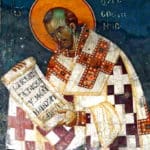
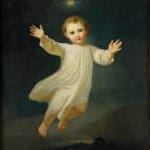

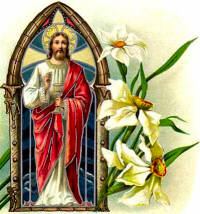
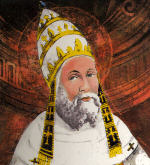 St. Soter, the successor to Pope Anicetus, died a martyr's death in 175. He was noted for his kindness to certain Greeks who had been condemned to the mines because of their faith in Christ. When he ascended the chair of Peter he forbade consecrated virgins to touch the sacred vessels and palls, or to carry censers in church. He also obliged the faithful, except those in mortal sin, to receive holy Communion on Maundy Thursday. Soter is the author of a letter to the Corinthians.
St. Soter, the successor to Pope Anicetus, died a martyr's death in 175. He was noted for his kindness to certain Greeks who had been condemned to the mines because of their faith in Christ. When he ascended the chair of Peter he forbade consecrated virgins to touch the sacred vessels and palls, or to carry censers in church. He also obliged the faithful, except those in mortal sin, to receive holy Communion on Maundy Thursday. Soter is the author of a letter to the Corinthians.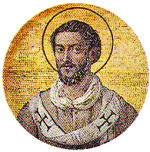 St. Caius (pope from 283 to 296) was closely related to the Emperor Diocletian. So that he might live to serve the faithful, he remained in concealment a long time and would not leave Rome. Ordinarily it was in the catacombs that he hid, and there he celebrated the holy mysteries and instructed many pagans. It was Pope Caius who decreed (according to the false Decretals) that the following steps must precede consecration to the episcopate: porter, lector, exorcist, acolyte, subdeacon, deacon, and priest. He died a natural death and was buried in the catacomb of Callistus on April 22. St. Susanna was his niece. Pope Urban VIII revived his memory in Rome by restoring his church, naming him as its patron saint, raising it to the rank of a station, and enriching it with the saint's relics.
St. Caius (pope from 283 to 296) was closely related to the Emperor Diocletian. So that he might live to serve the faithful, he remained in concealment a long time and would not leave Rome. Ordinarily it was in the catacombs that he hid, and there he celebrated the holy mysteries and instructed many pagans. It was Pope Caius who decreed (according to the false Decretals) that the following steps must precede consecration to the episcopate: porter, lector, exorcist, acolyte, subdeacon, deacon, and priest. He died a natural death and was buried in the catacomb of Callistus on April 22. St. Susanna was his niece. Pope Urban VIII revived his memory in Rome by restoring his church, naming him as its patron saint, raising it to the rank of a station, and enriching it with the saint's relics.